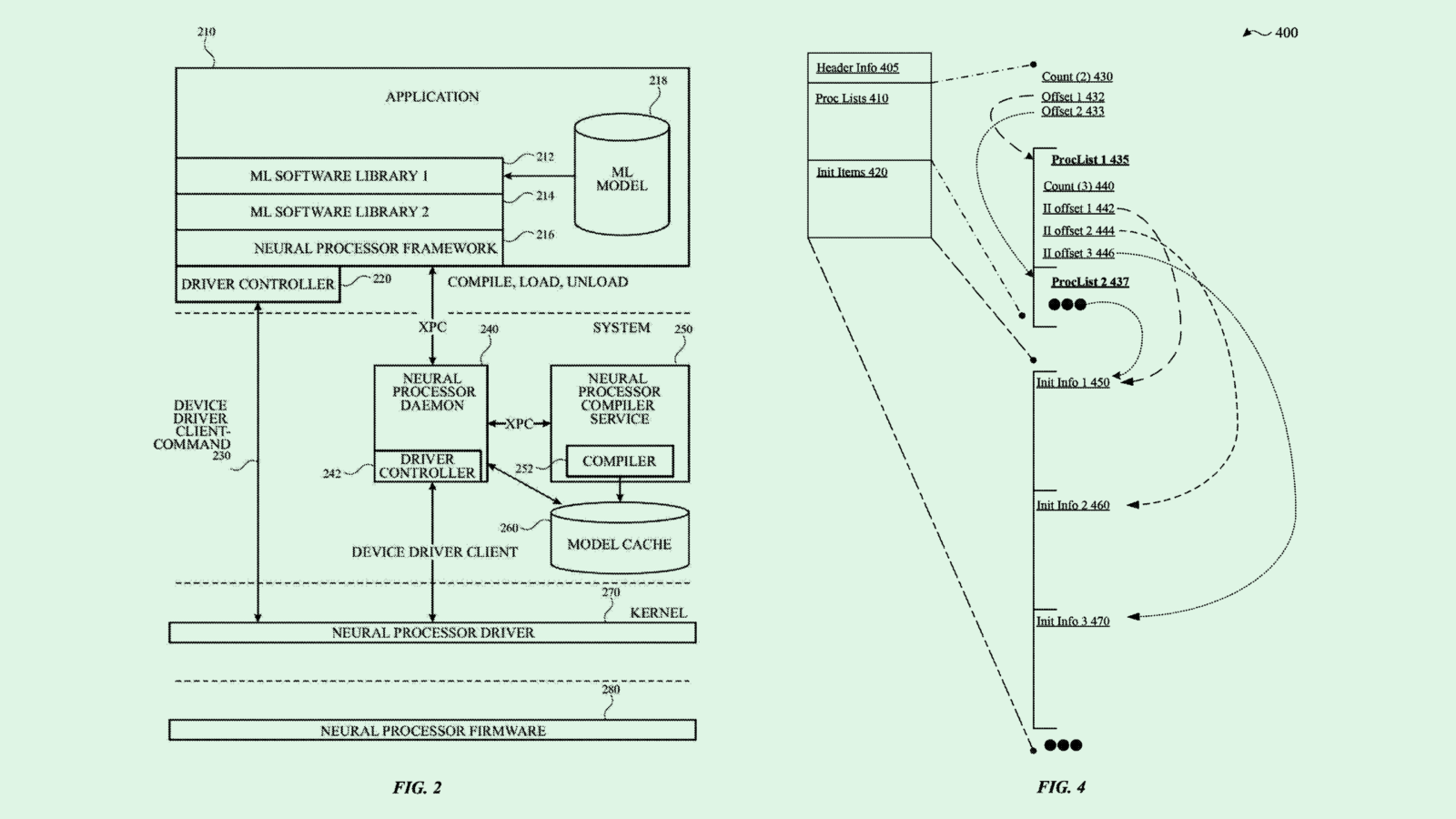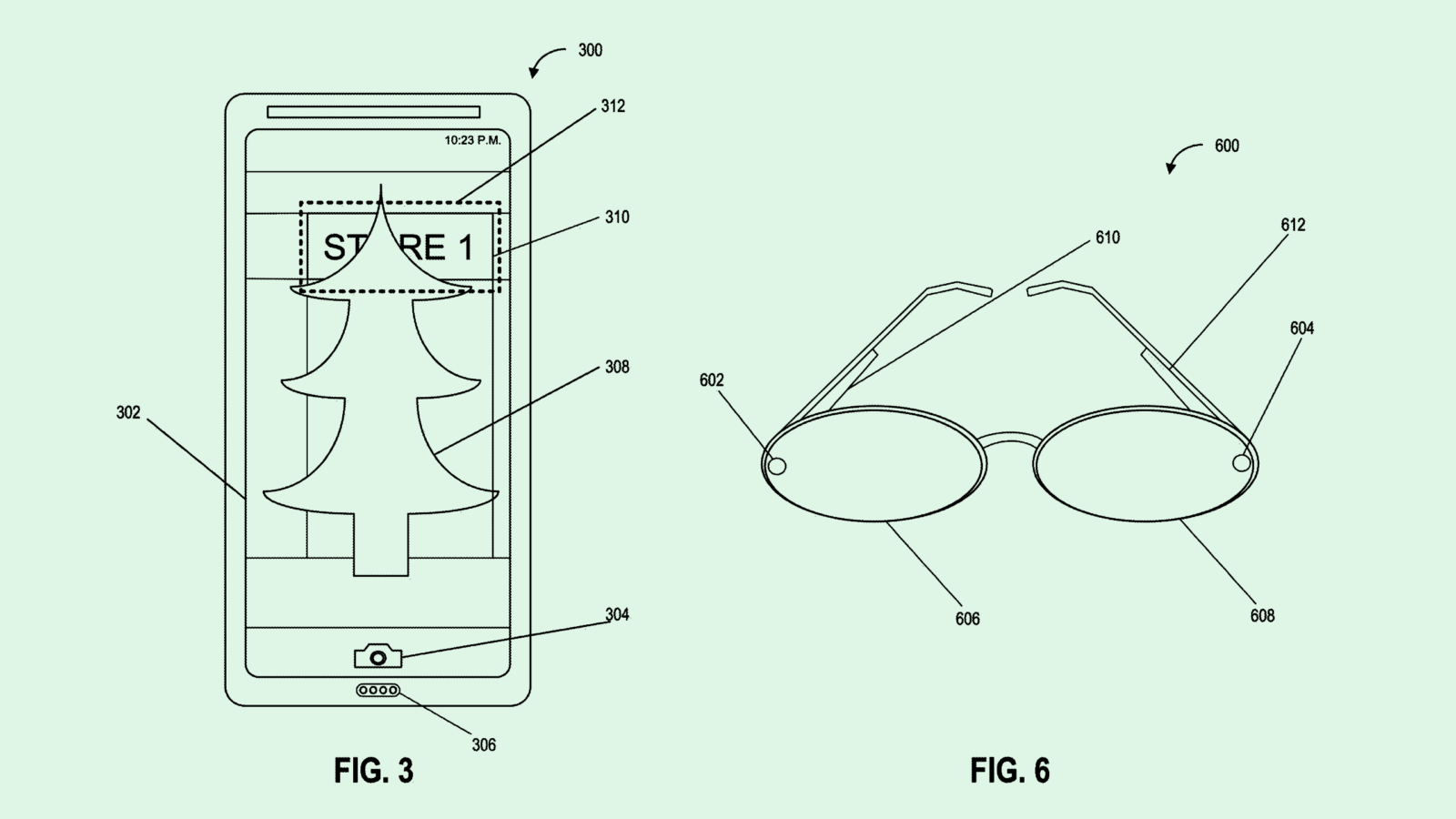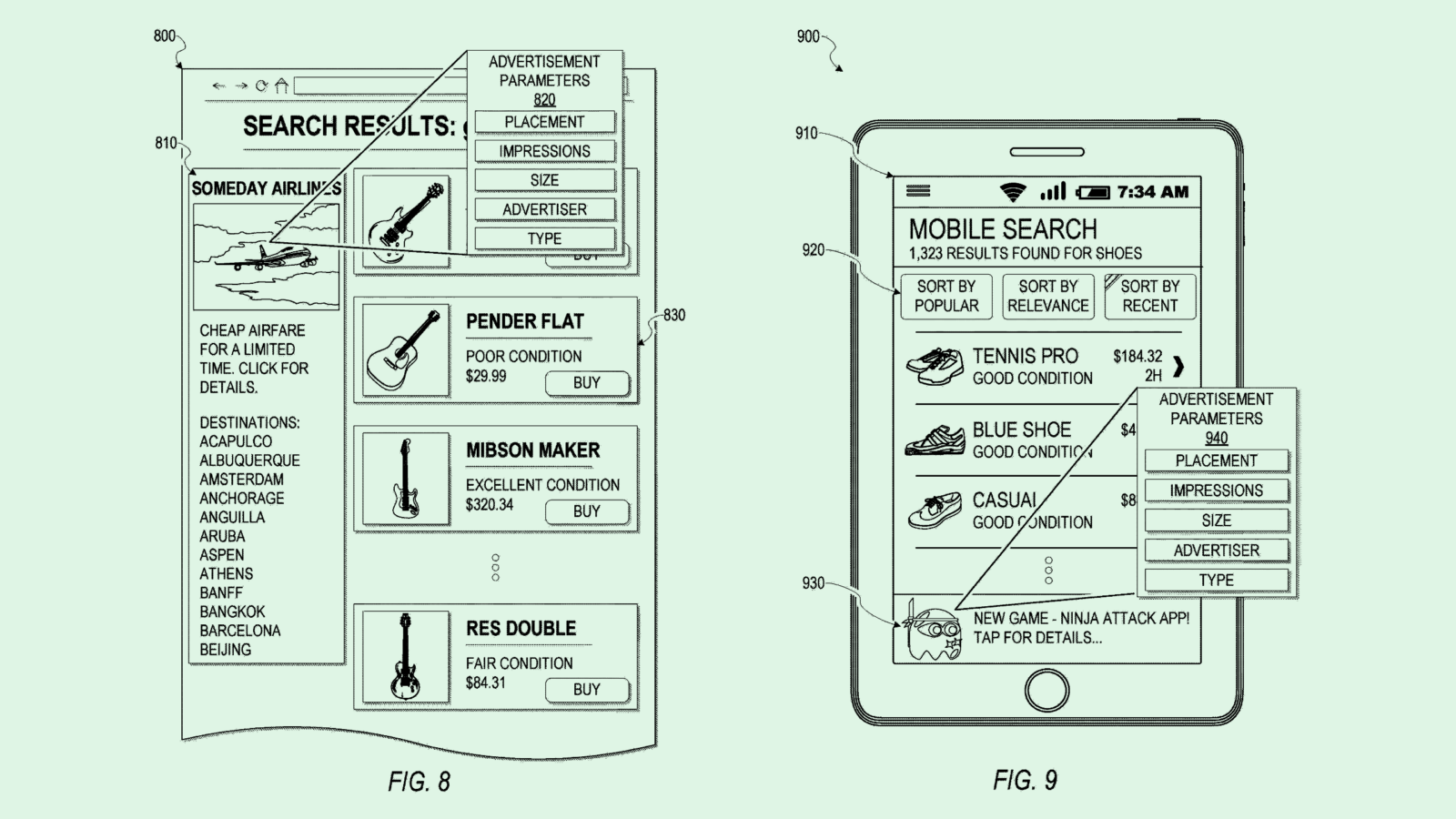Happy Thursday and welcome to Patent Drop!
Today, an Apple patent to train AI without eating up power highlights the advantages and headwinds the tech giant may face as it readies to jump into the race. Plus: Google gives glasses another go, and PayPal boosts its digital ads.
Let’s dive in.
Apple’s Adaptable AI
Apple may want its AI models to be a little more flexible.
The company is seeking to patent “mutable parameters for machine learning models” during runtime. Apple’s tech aims to make it easier for neural networks to be updated as they’re being used without the need to recompile, which takes significant computational resources.
“In some instances when executing a given deep neural network, depending on the machine learning task, it may not be possible to update certain parameters for the network,” Apple said. “It may not be possible to update the parameter data in the neural network as it is running.”
To put it simply: After Apple’s system receives the neural network’s code as well as a copy of its weights (a.k.a. the things that determine how a model makes decisions), the system figures out which layers are “mutable,” or can be changed while the model is running without deeply impacting performance.
Once it figures out which parts can be changed, the system will generate metadata, which includes the new weights and specifies which layers need to be updated, as well as other instructions on changes that need to happen to properly update the model. Apple’s system finally switches out the old weights for the new ones and updates the model in real time.
In practice, Apple’s system may allow for on-the-fly updates to AI models on its devices, making them more personalized and context-aware without burning through computational resources.

As the company prepares to unleash its AI-powered operating system on the world with the launch of Apple Intelligence in October, it makes sense that Apple would seek patents to make its models faster and more personalized, said Thomas Randall, advisory director at Info-Tech Research Group.
“The key piece is to continue to push those boundaries of how fast and how accurately we can give outputs that are of a very high quality and high speeds with as minimal resources as possible,” said Randall.
Apple already has quite a few advantages on its side as it enters the market, Randall noted. For one, its large cash flow has made investors “a bit more patient with Apple’s performance” in the AI space. Its partnership with OpenAI is also “crucial to its success,” Randall said, and the sheer market penetration it has with its devices is a clear leg-up.
However, the company still faces a few significant headwinds, he said. Namely, Apple’s main AI upgrades relate to its voice assistant Siri. But there simply may not be a “public appetite for that” use case, he said. Plus, a lot of its upcoming upgrades are “nice-to-haves” rather than “radical changes to the way in which people might interact with their phone,” he said.
Demand for the new iPhone 16 may also be weaker than expected ahead of its debut on Friday. “I don’t see customer excitement to the same degree as there might have once been,” said Randall.
With all of the tech industry’s eyes on Apple and its long-awaited debut, it’s incredibly important that the company gets AI right, said Randall. Bad results, and thereby bad PR, could be a major setback in an already tight market.
Google’s AR Locater
Google wants to understand your surroundings.
The company filed a patent application for “augmented reality-based geolocalization of images.” The goal of Google’s tech is to help users capture better images of target areas, such as businesses or landmarks, using location data and augmented reality overlays.
“By formalizing the capture of images that represent the actual state of a target location, the accuracy of associated geolocalized images can be improved and the need for burdensome manual verification of geolocalized images can be reduced,” Google said in the filing.
The point of this tech is seemingly to crowdsource good images for Google Maps “without having to resort to manual inspection by a human due to the high quality of captured images,” the filing noted.
When a user wants to capture an image of a specific location, the system may give the user instructions on how exactly to capture that image using AR as a guide. For example, if it’s capturing an image of a business, the user may be instructed via their phone or smart glasses to get certain things in the frame, such as the address number or hours of operation.
That data may then be used to update data related to that location (likely through Google Maps). Along with adding the image to a location’s listing, it could collect and update information related to visiting hours or business type.

Google’s tech can create a symbiotic relationship between users and its mapping technology: While it could help beef up listings for the company’s GPS tech, it can also add value to the user experience by opening the door for AR activations and guides for users, said DJ Smith, co-founder and chief creative officer at The Glimpse Group.
Tech like this also shows a potential advantage that Google may have in developing augmented reality that sits atop real-world experiences, said Smith: its access to a vast amount of data through Google Earth and Maps. This factor may give it “a point of differentiation that the other large technology companies might not have,” he said.
And that edge may be particularly helpful as it joins the likes of Meta, Apple, and Snap in the competition to create mixed reality headgear that people actually want to wear. The company is working with Qualcomm and Samsung on a pair of mixed reality smart glasses that are linked to wearers’ phones.
Though Google’s glasses are meant to be a companion to a person’s phone, the push from big tech firms to create the next spatial computing device may signal that “our phones are getting to the end of their evolution,” said Smith. “With spatial computing, there’s this saying of ‘where you need it, when you need it,’ as opposed to buried without a phone.”
However, this isn’t the first time that Google has wanted to throw a set of spectacles into the mix. In order to avoid the missteps it took with Google Glass — and the nickname that came along with it — is an emphasis on privacy, said Smith. “They missed the mark on the security and privacy side of things. People didn’t want to be privately recorded by these devices.”
PayPal’s Ad Fix
PayPal wants to make sure its ads are doing what they’re supposed to.
The fintech firm filed a patent application for “advertising cannibalization management.” For reference, advertising cannibalization occurs when a company over-advertises (or when two companies’ advertisements compete for user attention), and subsequently loses customers that it would have otherwise had.
“Digital advertising has become a significant source of revenue for many online companies,” PayPal said in the filing. “However, excessive advertising can cause a loss in sales revenue for websites that sell products to consumers.”
To avoid this, PayPal’s tech tracks user behavior metrics from page to page of a website, specifically tracking interaction with “interface elements” that lead to different pages, like buttons, links, and, of course, digital ads.
Based on that data, PayPal’s tech calculates a “presentation value” to quantify how effective an ad would be through any given interface element. Using those values, PayPal’s tech then can dynamically adjust ad placement on a website to promote engagement and personalize user experience, as well as prevent competition between advertising companies.

This isn’t the first time we’ve seen PayPal take an interest in digital advertising. The priority data on this patent alone traces its interest in this tech back roughly a decade. But PayPal officially joined the digital ad business in late May, when it launched a new business division called PayPal Ads to leverage its vast amount of user data to benefit advertisers.
The division would utilize data from user purchases as well as information from spending patterns of users across Venmo and PayPal. The company also began testing a platform called Advanced Offers, which uses AI to target users with special discounts.
“Commerce and advertising are deeply connected, and we believe that the advertising platform we are building at PayPal will become a must-use marketing channel for merchants big and small,” Diego Scotti, EVP and general manager of the company’s Consumer Group and Global Marketing and Communications, said in a statement at the time.
PayPal followed in the footsteps of JPMorgan Chase, which launched its own “digital media business” called Chase Media Solutions in April. And Visa previously sought to patent a way to monitor user spending habits using AI to target special offers to users. Given the sheer amount of data that these companies have access to on a day-to-day basis, it makes sense that they’d want to put it to use.
Extra Drops
- IBM wants to avoid autonomous gridlock. The tech firm is seeking to patent “autonomous vehicle traffic management.”
- Meta wants you to go long. The company wants to patent “sensors for accurately throwing objects in an artificial reality environment.”
- Microsoft wants to see your perspective. The company filed a patent application for “optical data transfer” for a head-mounted display.
What Else is New?
- Chinese tech firm Alibaba released more than 100 open source AI models, boosted its proprietary tech and launched a new text-to-video tool.
- YouTube announced new AI features for creators to utilize Google DeepMind’s video generation tech.
- Amazon introduced Amelia, an AI assistant for third-party sellers to help handle sales and inventory data.
Patent Drop is written by Nat Rubio-Licht. You can find them on Twitter @natrubio__.
Patent Drop is a publication of The Daily Upside. For any questions or comments, feel free to contact us at patentdrop@thedailyupside.com.
